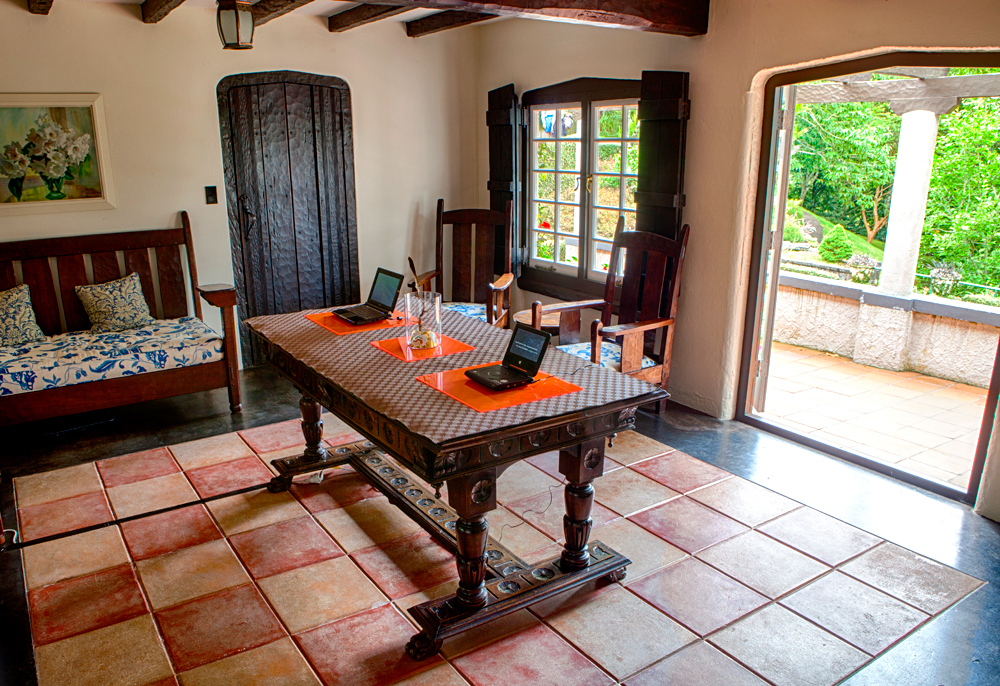The River Speaks
The project was installed in the historic homestead of Tupare, which is situated on the Waiwhakaiho River[/caption]
The River Speaks connects live river data from the Waiwhakaiho River to our project website, where the data controls the audio heard. The audio is one part of an installation consisting of a small assemblage located in between two video sources. The audio, video and installation all are reference points to rivers and flow.
The project is a collaborative work by Ian Clothier, Andrew Hornblow and Nina Czegledy. It was created for Sharing the Waiwhakaiho and was based on the live data from the Waiwhakaiho River.

Public presentations of the creative projects began with The River Speaks, which used live river data, audio and video
The above image shows the actual river data graphed on February 8th 2015 – the stepped appearance is due to data coming into the project every thirty minutes – this is the time interval the Regional Council collects its river data[/caption]
Some of the deeper connotations of associations with the river were explored. Wai, which means water or flow, is placed very highly according to eminent Maori activist and proponent of Maori language Dr Te Huirangi Waikerepuru CNZM. An animated chart describing layers of a Polynesian universe and written by Dr Waikerepuru, is one source of video. Some of the audio files played by the project website, are audio of Dr Waikerepuru talking about wai and the Waiwhakaiho River, from The Wasteland by Indian video artist Sharmila Samant.
The second video source is a video by Jo Tito of sea water shot in the tidal zone of a local beach. Tito was very interested at the time she shot the video, in connections between Maori knowledge and Western science. It is possible to see in the sweeping lines of flow she captured, both the repeating patterns of Maori art and design, and the structures of flow as it might be studied by Western science.
Nestled between these two is an assemblage – a container in which are placed a kawakawa (a small native tree) tree root which has a feather attached. These two are respectively symbolic of the dendritic drainage patterns of which Taranaki is an exemplar – the Waiwhakaiho River being one catchment; and a reference to flow and turbulence in the air for which the feather of a bird is uniquely engineered. The feather is that of a native kereru, a large wood pigeon. These two sit upon an antique Chinese bowl, a reference to some of the items located in the rooms which housed the installation.
The audio component of the project sweeps in with audio from diverse sources, all indigenous. The aim of connecting to the environment by using data sensors and interconnecting to audio, was to open a dialogue with indigenous peoples many of whom hold water or flow in very high regard.
Thanks to Andrew Hornblow who makes custom data sensors, Julian Priest and Adrian Soundy who authored the web components. A very special thank you to the contributors of the audio and to Nina Czegledy who brought two new voices to the project – artist Kura Puke of the local Ngati Tawhirikura hapu, video producer/director and Nanavut Inuit Stacey Aglok MacDonald, who joined Dineh/Navajo flautist Andrew Thomas, and Darren Robert Terama Ward (Te Whanau a Apanui, Te Aitanga a Mahaaki) who makes his own traditional Maori instruments. I’d also like to thank Dr Te Huirangi Waikerepuru for his words, wisdom and forethought, and Clare Mewse of the Regional Council, for the use of Tupare House for the installation.


